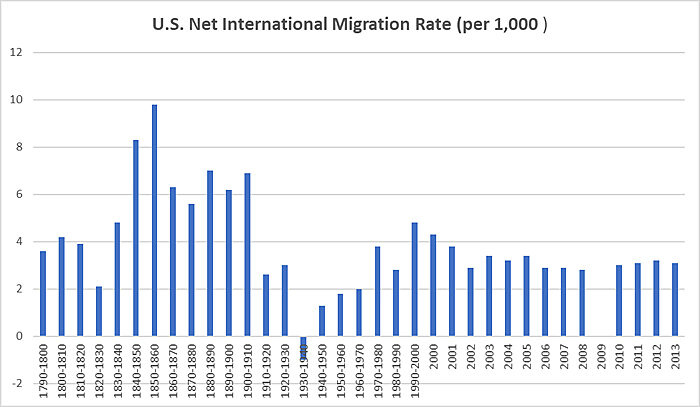Finally, there’s the fact that the United States remains one of the least “open” economies in the world. For example, the Federal Reserve Bank of San Francisco found in 2019 that only about 11 percent of U.S. consumer spending can be traced to imported goods—a “nearly unchanged” ratio over the past 15 years. According to the World Bank, moreover, the United States in 2019 ranked dead last among surveyed countries in terms of trade (imports and exports of goods and services) as a share of national GDP—26 percent, right below Sudan and Cuba (27 percent) and also well below China (36 percent), Japan (37 percent), South Korea (77 percent) and Germany (88 percent) and the world average (60 percent). We ranked fifth-lowest (14.7 percent) in terms of import shares, again below China (17.3 percent), Japan (18.3 percent), South Korea (36.9 percent), Germany (41.1 percent) and the world average (30%). Other, more sophisticated analyses of trade openness show the same thing.
So much for all that globalism.
Summing it all up.
Various independent analyses of economic freedom generally reflect the trends above: today the United States ranks sixth overall in the Fraser/Cato Economic Freedom of the World report (down from second in 1980); sixth overall in the World Bank’s Doing Business Report (down from first in 2004); and 17th in the Heritage Foundation’s Index of Economic Freedom (down from fourth in 1995). Each of these reports shows similar things: (1) strong and consistent U.S. performance in systemic areas like property rights and rule of law, but middling scores on the issues—trade, taxation, business formation, fiscal health, etc.—where “libertarian economics” would have the largest impact; and (2) other countries’ more consistent embrace of freer markets in recent years. (Maybe their libertarians do control things.)
None of this is to say, of course, that “libertarian economics” has been meaningless in Washington. Beyond the aforementioned victories (and others), it’s possible—if not likely—that things would be even worse without strong, consistent, and vocal advocates for free markets and free people. But all of the above should put to bed the silly idea that “libertarian economics” have been driving the U.S. policy bus since Friedman’s essay first graced the Times’ pages 50 years ago. Instead, U.S. policy over this period has ebbed and flowed from more limited to more expansive state intervention (and back again), while government overall has slowly crept ever bigger—much to libertarians’ chagrin. There have been some clear free market victories, some clear losses, and a lot of bureaucratic inertia and partisan politics in between. Many of those victories, moreover, have come not from an idealistic embrace of Friedman and Hayek but instead as a reluctant, kludgy response to decades of failed alternatives or due to non-economic (e.g., foreign policy) factors.
But overall, our current, mishmash system reflects the divided and often frustrating mix of views and procedures that is the United States. That reality is far more complicated (and boring) than the populist caricature, and it certainly doesn’t lend itself to easy solutions like purging Friedmanesque ideologues from the government. But it’s nevertheless true. And the sooner we acknowledge this reality, the sooner we can grow up and get to work on making it better.
Chart of the Week
Creative destruction, baby:






















